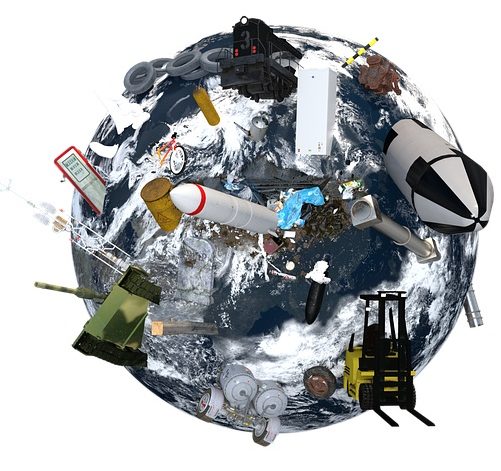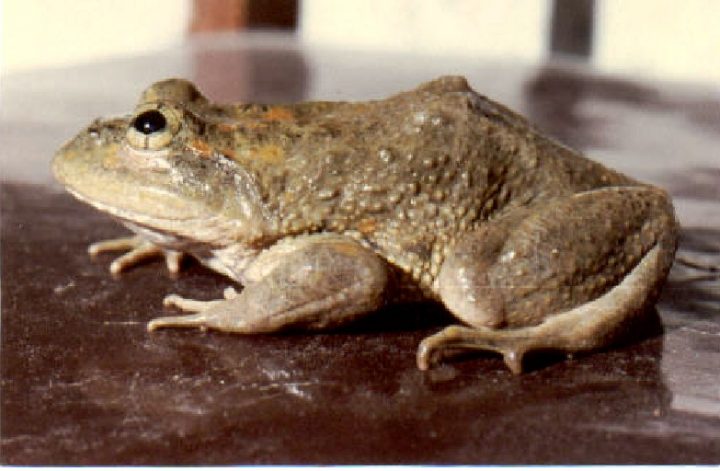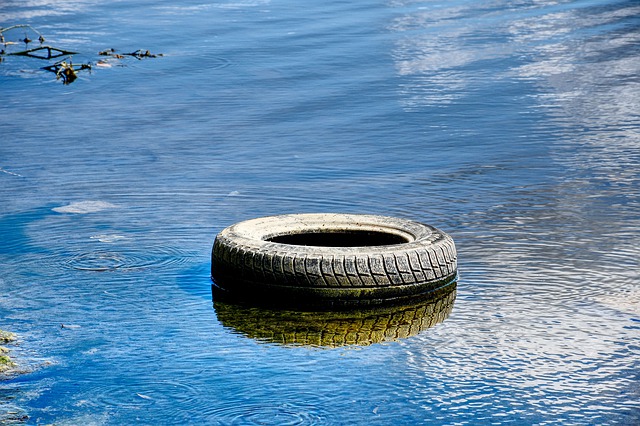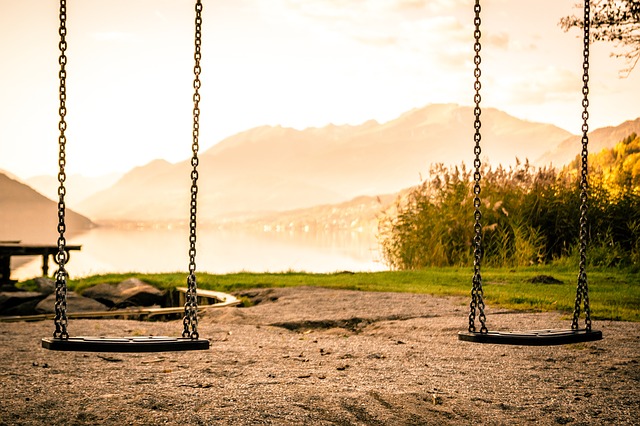INTRODUCTION
Climate Change: Climate change is a complex phenomenon that is defined as long term changes in global or regional weather patterns that also includes large scale variations in global, regional and local climate pattern of the Earth.
Also check out: How Much Time Earth Has Before Climate Change Destroys it?
WHAT ARE CAUSES OF CLIMATE CHANGE?
In simple terms, the causes of climate change include natural activities and anthropogenic activities. However, anthropogenic activities are constantly playing their role in global changes in climatic pattern changes.
a) Natural Causes of Climate Change:
Natural causes of climate change include natural events of the Earth that are briefly defined below. The contribution of natural events is considered minimum while discussing global climate changes.
1. Tectonic Plates Movement and Volcanic Activities: The movement of Earth plates is a natural event that ends up in volcanic eruptions. Volcanic eruption releases smoke, aerosol particles, and volcanic gases into the atmosphere, causing global warming that leads to long-term changes in global weather.
2. Earth’s Orbital Changes: The changes in Earth’s orbit do have some effects that induce short-term changes in the global climate. For instance, when the Earth is tilted towards the sun, it affects the duration of seasons, and Earth experiences a warmer climate.
3. Solar Variations: The changes in solar radiation coming to the Earth and leaving the atmosphere include little changes in the global weather patterns.
b) Anthropogenic Causes of Climate Change:
Human activities are a major contributor to catastrophic changes in global climate patterns. Human activities that are responsible for climate change are listed below.
1. Greenhouse Effect: Increasing human activities that include burning fossil fuel release greenhouse gases into the atmosphere of the Earth. The emission of greenhouse gases produces a greenhouse effect that is further described as global warming.
2. Deforestation: Forests act as a carbon sink, however, deforestation has led to high levels of carbon dioxide in the atmosphere that raises the average surface temperature of the Earth leading to global climate changes.
3. Land Use Change and Surface Albedo: Land-use changes affect the surface albedo. Cutting forests for agricultural practices, housing schemes, industries, etc influences the heat exchange phenomenon between Earth’s atmosphere and surface.
4. Overpopulation: The human population growth is leading to increasing emission of greenhouse gases due to industrialization, urbanization that ultimately results in human-driven climate changes.
5. Ozone Depletion: The depletion of the protective ozone layer due to the release of CFCs and aerosols is allowing harmful radiation from the sun and this situation is affecting the global weather pattern of the Earth.
6. Air Pollution: Air pollution such as smog tends to induce the worst conditions of climate. The dark particles in the air trap gases into the Earth’s atmosphere. This causes increasing the average surface temperature and results in natural disasters.
Read: 10 Simple Ways You Can Raise Awareness About Climate Change
WHAT ARE THE EFFECTS OF CLIMATE CHANGE?
Climate change is happening right now and the severe effects of it are bringing more complications for humans, animals, and the whole ecosystem. Climate change is already showing consequences for agriculture, soil health, water reserves, global weather patterns etc all over the world. Below is a list of some common impacts of Climate Change:
1. Polar Ice Cap Melting and Glacier Retreat: Climate change is resulting in polar ice caps melting and glacier retreat due to increase emission of greenhouse gases – an outcome of fossil fuel burning. For detailed info: Glacier Melting and Glacial Retreat – Causes, Effects, Solutions.
You may also wish to read: Third Pole Is Melting – Himalaya-HinduKush-Karakoram Glacier
2. Sea Water Rise: Seawater acts as a carbon sink. The high levels of carbon in the atmosphere have led to warmer ocean surfaces. The sea level is rising because of the thermal expansion of seawater when it gets warmer. Also, the glacier retreat and melting ice are also responsible for sea-level rise.
3. Rising Global Surface Temperatures: There is a notable rise in global surface temperature since the industrial revolution. The rising surface temperature is warming the Earth’s atmosphere and disturbing global weather patterns.
4. Ocean Acidification and Coral Bleaching: The high levels of carbon in the atmosphere due to deforestation, fossil fuel combustion, etc lowers the pH of the ocean resulting in ocean acidification and coral bleaching. To know more: What is Ocean Acidification? – Causes, Effects and Solutions.
5. Spread of Diseases: There are more cases of disease outbreaks due to climate change and health complications are increasing. Read how Covid – 19 is impacting environmental sustainability.
6. Droughts: Climate change is creating drought conditions by affecting land fertility. Crop production is getting affected by extreme weather events.
7. Extreme Weather Events: Climate change is resulting in extreme weather events such as frequent floods, heavy precipitation, etc.
8. Heat Waves: Climate change is increasing the frequency of heatwaves. The growing population is now more vulnerable to the consequence of heatwaves.
Also read this related article: Global Heat Wave and Wildfires – Causes, Effects, Solutions
9. Forest/Bush Fires: The hot atmosphere and extreme weather conditions are favoring catastrophic natural events such as forest/bushfires.
10. Desertification: Climate change is affecting land fertility, making it less productive and barren ultimately leading to desertification.
11. Shifting Seasons: Climate change has negative effects on the seasons. The summers are getting longer. There is a study that indicates that climate change is worsening the allergy seasons.
12. Change in Ocean Current and Wind Patterns: The increasing surface temperature is weakening ocean currents. Climate change is negatively influencing ocean currents, global heat distribution, and wind patterns.
13. Lowering Water Table: The increasing stress on water reserves due to extreme weather events and water scarcity is leading to lower water tables. The groundwater is not getting recharged and being subjected to contamination.
14. Floods: Extreme weather events such as heavy rainfalls are an outcome of global climate change. There is an increased frequency of destructive floods such as is being seen in almost all parts of the world from the past few years. For example: Europe Floods 2021 Due to Climate Change – Causes and Effects
Also check out: Flash Floods – Causes, Effects, Prevention and Management
15. Biodiversity Loss: Climate change is destroying habitats that lead to biodiversity loss. Many species have gone extinct due to habitat loss caused by human-induced climate change. Also read: Wildlife Is Already Coping With Effects of Climate Change
16. Water Scarcity: Climate change is stressing water reserves and weather events are leading to contamination of water resources. Water scarcity is becoming a prevalent issue in developing countries.
17. Food Insecurity: Less productive lands due to extreme weather events and natural disasters creating a global issue of food insecurity.
18. Instability: Many countries would suffer from instability due to effects of climate change. Check out this list of These 11 Countries Risk Instability Due To Climate Change.
CONCLUSION
Climate change is not a simple term to be taken lightly. The whole world is currently facing the consequences of climate change. However, the fact is, climate change has been induced by wealthy and developed countries whereas poor and underdeveloped countries are experiencing its consequences more than any region on the earth. There are top companies that are responsible for the world’s third carbon emission. The developed countries are producing huge quantities of food waste that too release greenhouse gases that lead to changes in weather patterns. There are no significant efforts taken by global leaders to control the emission of climate change-driven factors.
You might also want to read: What is Climate Change Adaptation? – Importance and Methods
I hope you all liked this post! Please comment below if you have any suggestions, comments, or feedback! We at #envpk love hearing from our readers! Thanks!




